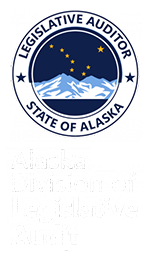| SUMMARY OF: | A Special Report on the Department of Transportation and Public Facilities, Force Account Projects, March 3, 2005. |
Purpose of the Report
In accordance with Title 24 of the Alaska Statutes and a special request by the Legislative Budget and Audit Committee, we have conducted an audit of the Department of Transportation and Public Facilities (DOTPF). The overall objective of the audit was to determine the extent to which DOTPF uses force accounts for construction projects. Additional objectives included review of policies and procedures over force account, comparison of state wages to Davis-Bacon wage rates, review and analysis of public interest finding.
Report Conclusions
The majority of force account work is for preventative maintenance projects. Beginning in 1998, the Federal Highway Administration (FHWA) allows the State to utilize funding for maintenance projects designed to prolong the life of federally-funded highways. In the past, these activities were paid for with state general funds. DOTPF has taken advantage of this change by expanding the preventative maintenance activities conducted by Maintenance and Operation (M&O) personnel. The work on these projects primarily consists of aggregate leveling, asphalt treatments, crack sealing and repairs, guardrail adjustments, drainage improvements, and other miscellaneous maintenance and repair activities. The purpose of these projects is to provide the treatments necessary to preserve road conditions, control deterioration, and reduce long-term maintenance costs.
We found DOTPF’s policies and procedures over force accounts projects to be sufficient, that force account wages are generally equivalent to Davis-Bacon wages, materials, and equipment on force account projects were properly obtained, and the public interest findings were adequately supported and approved by DOTPF’s Chief Contracts Officer.
Findings and Recommendations
- The Department of Transportation and Public Facilities (DOTPF) commissioner should improve procedures governing public interest findings on force account projects.
One of DOTPF’s estimating methodologies may tend to overstate, albeit in minor amounts, the contractors estimated costs. In the adjustment factor methodology, estimates are based on percentages that are not well documented. For example, the guidance is unclear as to what portion of mark-ups is for profit versus overhead. In general, support for percentages used is not well defined. The guidance could be better supported to eliminate the appearance of overstatement of savings. In addition, final reports summarizing the results of force account projects are not reviewed and compared to public interest findings to verify if intended goals and cost estimates were met.
The Chief Contracts Officer is responsible for review and approval of public interest findings for force account projects over $100,000, but does not receive a final report summarizing the outcome of the force account projects upon completion. For this reason, the final result of force account projects are not reviewed to verify if they met the intended goals and established estimates according to the PIF.
DOTPF prepares and submits close-out reports to the federal oversight agency providing the funding for such projects. While these close-out reports meet federal agencies’ monitoring requirements, they are not sufficient for state purposes for two primary reasons. First, the Chief Contracts Officer does not receive a copy of the reports; and, secondly, the expenditures of all state funds are not included in the reports. For example, overruns borne by the State are not included in such reports. A separate report, summarizing the outcome of the force account project including all costs, would enhance internal control over the PIF process by providing additional monitoring and documentation to support the estimates contained in the PIF.
Without a final report including all the costs related to the project, it is possible project costs could be significantly higher than estimated in the PIF, which could potentially change the Chief Contract Officers’ decision making on the cost effectiveness of using state forces.
We recommend DOTPF strengthen internal control procedures over the PIF process by requiring a final report that summarizes the outcome of the project and it should include all related project costs as well as overruns. Secondly, DOTPF should clarify methodologies for estimates. Specifically, document the methodology supporting the percentages used in estimates. Finally, DOTPF’s Standard Specifications for Highway Construction Manual, section 109-1.05, should be updated to specify the portion of mark-up that applies to overhead versus profit. This will help ensure estimates are reasonable and improve the documented support for those estimates.

